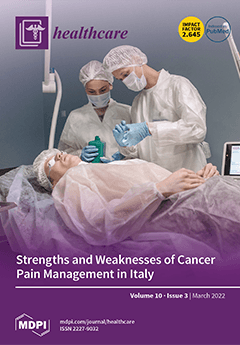Background. Out-of-hospital cardiac arrest (OHCA) remains a challenge for emergency physicians, given the poor prognosis. In 2020, MIRACLE2, a new and easier to apply score, was established to predict the neurological outcome of OHCA. Objective. The aim of this study is to compare
[...] Read more.
Background. Out-of-hospital cardiac arrest (OHCA) remains a challenge for emergency physicians, given the poor prognosis. In 2020, MIRACLE2, a new and easier to apply score, was established to predict the neurological outcome of OHCA. Objective. The aim of this study is to compare the discrimination of MIRACLE2 score with cardiac arrest hospital prognosis (CAHP) score for OHCA neurologic outcomes. Methods. This retrospective cohort study was conducted between January 2015 and December 2019. Adult patients (>17 years) with cardiac arrest who were brought to the hospital by an emergency medical service crew were included. Deaths due to trauma, burn, drowning, resuscitation not initiated due to pre-ordered “do not resuscitate” orders, and patients who did not achieve return of spontaneous circulation were excluded. Receiver operating characteristic curve analysis with Youden Index was performed to calculate optimal cut-off values for both scores. Results. Overall, 200 adult OHCA cases were analyzed. The threshold of the MIRACLE2 score for favorable neurologic outcomes was 5.5, with an area under the curve (AUC) value of 0.70 (0.61–0.80,
p < 0.001); the threshold of the CAHP score was 223.4, with an AUC of 0.77 (0.68–0.86,
p < 0.001). On setting the MIRACLE2 score cut-off value, we documented 64.7% sensitivity (95% confidence interval [CI], 56.9–71.9%), 66.7.0% specificity (95% CI, 48.2–82.0%), 90.8% positive predictive value (PPV; 95% CI, 85.6–94.2%), and 27.2% negative predictive value (NPV; 95% CI, 21.4–33.9%). On establishing a CAHP cut-off value, we observed 68.2% sensitivity (95% CI, 60.2–75.5%), 80.6% specificity (95% CI, 62.5–92.6%), 94.6% PPV (95% CI, 88.6%–98.0%), and 33.8% NPV (95% CI, 23.2–45.7%) for unfavorable neurologic outcomes. Conclusions. The CAHP score demonstrated better discrimination than the MIRACLE2 score, affording superior sensitivity, specificity, PPV, and NPV; however, the CAHP score remains relatively difficult to apply. Further studies are warranted to establish scores with better discrimination and ease of application.
Full article






